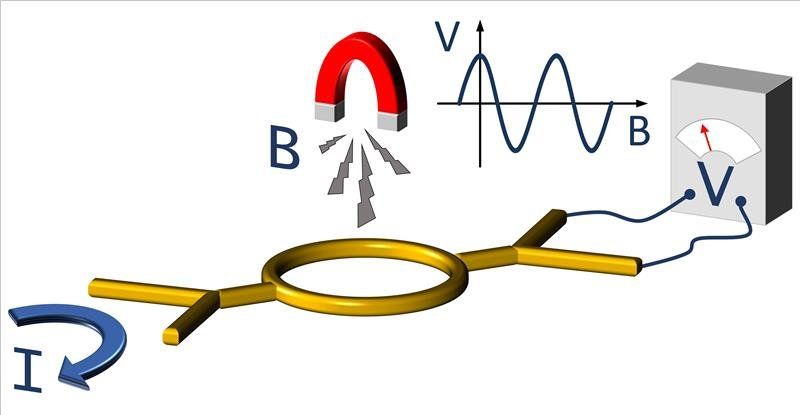Too cool.
Nanotechnologists at the University of Twente research institute MESA+ have discovered a new fundamental property of electrical currents in very small metal circuits. They show how electrons can spread out over the circuit like waves and cause interference effects at places where no electrical current is driven. The geometry of the circuit plays a key role in this so called nonlocal effect. The interference is a direct consequence of the quantum mechanical wave character of electrons and the specific geometry of the circuit. For designers of quantum computers, it is an effect to take account of. The results are published in the British journal Scientific Reports.
Interference is a common phenomenon in nature and occurs when one or more propagating waves interact coherently. Interference of sound, light or water waves is well known, but also the carriers of electrical current — electrons — can interfere. It shows that electrons need to be considered as waves as well, at least in nanoscale circuits at extremely low temperatures: a canonical example of the quantum mechanical wave-particle duality.
Gold ring
The researchers from the University of Twente have demonstrated electron interference in a gold ring with a diameter of only 500 nanometers (a nanometer is a million times smaller than a millimeter). One side of the ring was connected to a miniature wire through which an electrical current can be driven. On the other side, the ring was connected to a wire with a voltmeter attached to it. When a current was applied, and a varying magnetic field was sent through the ring, the researchers detected electron interference at the other side of the ring, even though no net current flowed through the ring.
